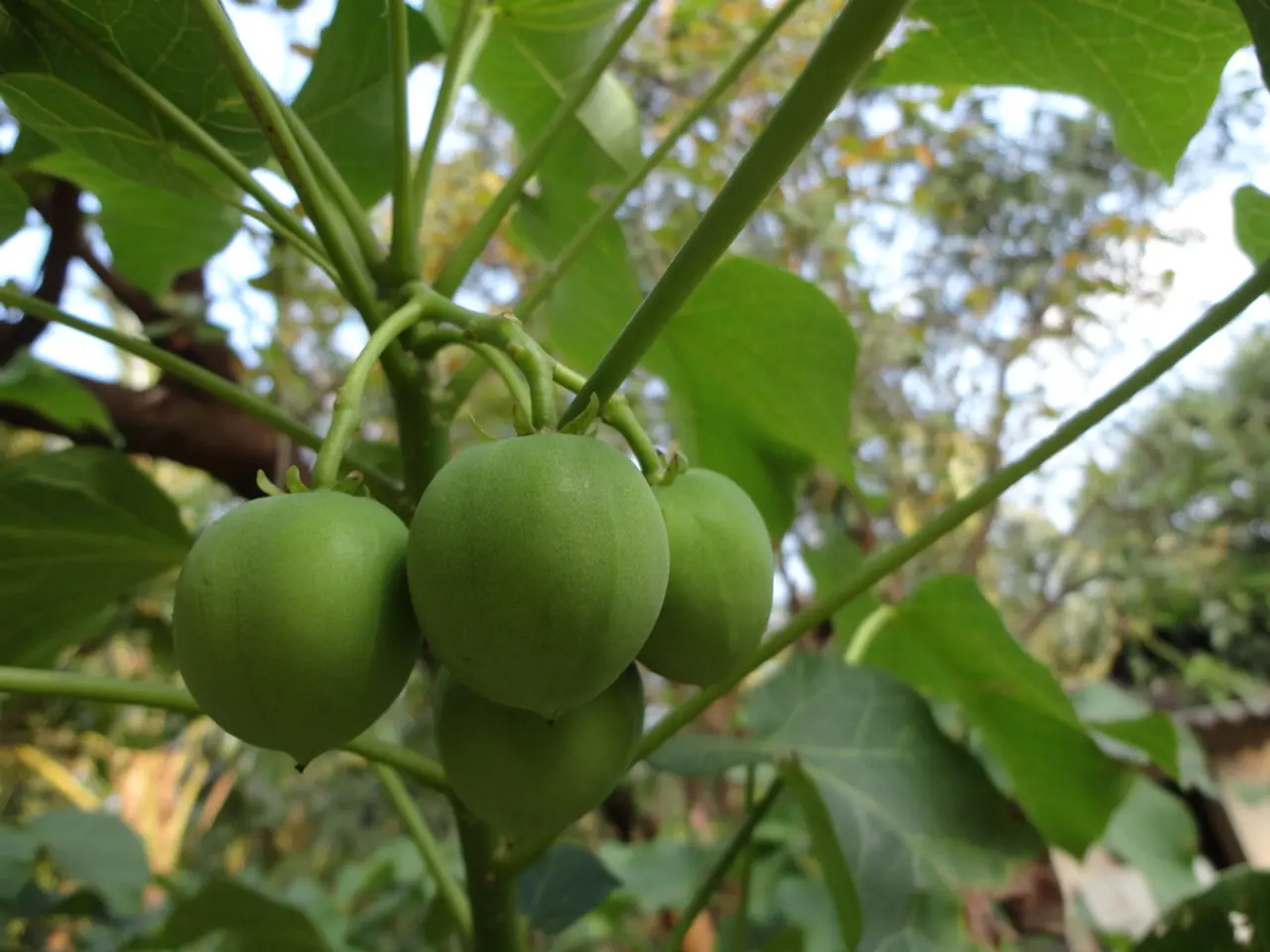Practical Approaches for Cross-Pollinating Fruit Trees in Orchards
In the heart of fruit-growing regions, a dedicated practitioner is revolutionising traditional orchard management by focusing on creating pollinator-friendly environments. This innovative approach aims to attract more bees, butterflies, and other helpful insects during bloom, leading to better fruit set and higher yields.
The practitioner's strategy begins with careful plant selection. Native wildflowers and low-maintenance clovers are favoured for their ability to feed local pollinators best. These species, such as dandelions and clover, are also kept in low-traffic edges, providing a vital source of nectar and pollen.
Moreover, the practitioner chooses a long bloom sequence, planting early, mid, and late bloomers to ensure a continuous supply of food for pollinators throughout the season. This diversity also ensures a variety of pollinators are attracted to the orchard, each with their unique pollination preferences.
When it comes to orchard layout, the practitioner places flowering strips along rows and field edges, at least 1-3 meters wide. These strips not only enhance the visual appeal of the orchard but also serve as vital pollinator habitats. The practitioner also plants in clumps of three or more for better visibility and pollinator attraction.
The placement of hives is another crucial factor. To optimise bee activity, hives are avoided in shade and placed on the sunny side. For short blossoms, hives are moved 2-3 days before full bloom. The practitioner also places hives on the windward edge if possible, taking advantage of natural breezes to aid pollination.
Hive clusters are spaced every few rows, and for mixed varieties, hives are placed where overlapping varieties meet to ensure effective cross-pollination. For long bloom windows, the practitioner stagger hive density and adds hives at peak bloom to ensure continuous pollination.
Water is also an essential consideration. The practitioner provides water within 100-200 feet of hives, ensuring bees have access to hydration during their vital work.
The goal of this approach is to increase visits during bloom, leading to better fruit set and higher yield. The practitioner tracks fruit set and adjusts hand pollination sessions or hive placement accordingly to ensure the most effective results.
In essence, the practitioner treats the orchard like a neighbourhood for bees, butterflies, and other helpers, fostering a harmonious ecosystem that benefits both the pollinators and the fruit growers. Despite extensive online searches, there are currently no results specifying which organisation or institution developed these recommendations for creating pollinator-friendly fruit tree gardens and improved pollination methods for orchards. However, the impact of this approach is undeniable, offering a promising future for sustainable fruit production.
Read also:
- Genetically Modified Spiders Debut Worldwide First
- Covid-19 surge in September: "There's a risk of an extended infection wave simultaneously with the flu season"
- Lawsuits filed by numerous families against Boeing and Honeywell in relation to the fatal Air India crash in June, claiming the lives of 260 individuals.
- A visiting experience for Starmer might face an early end




